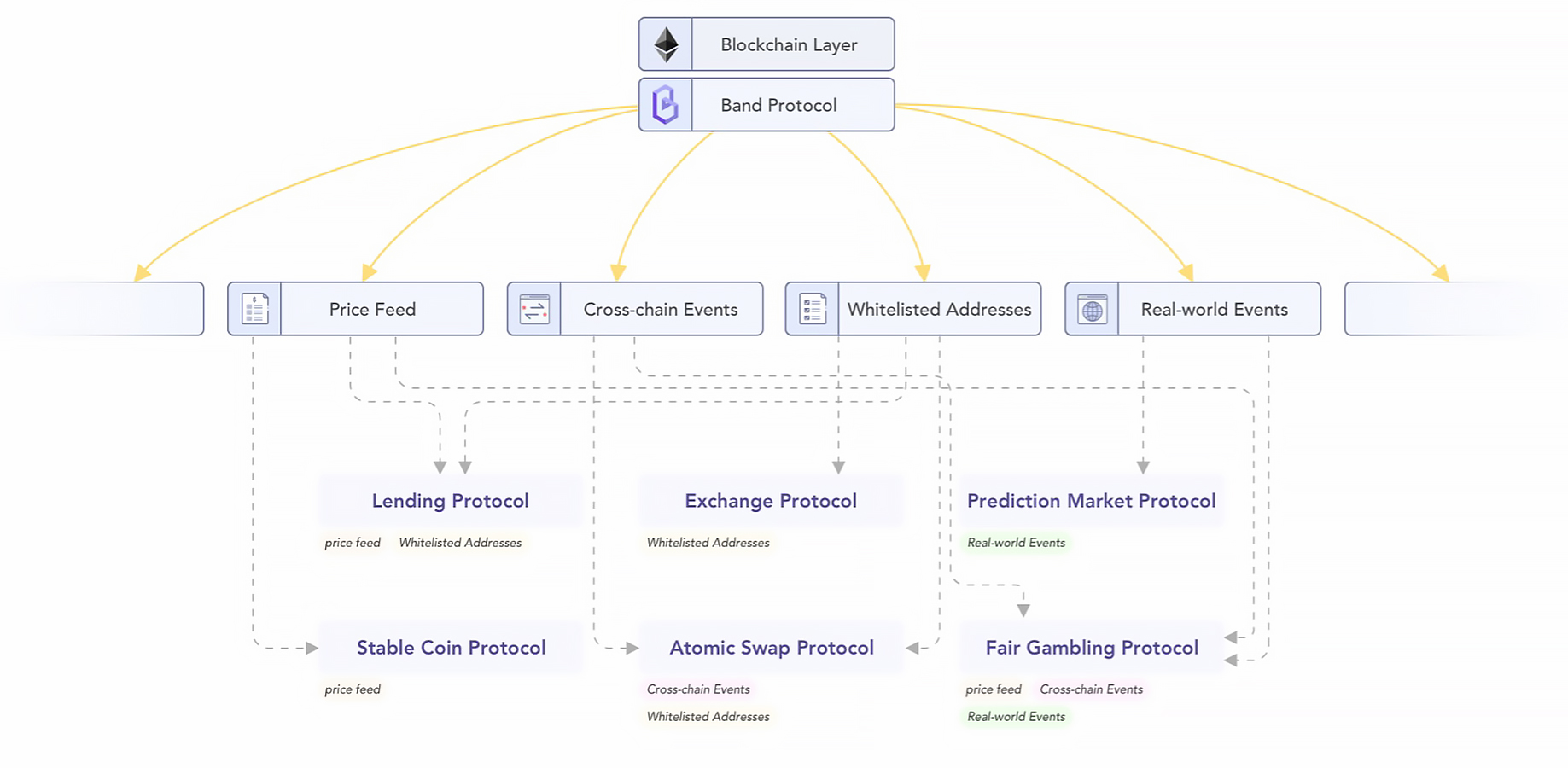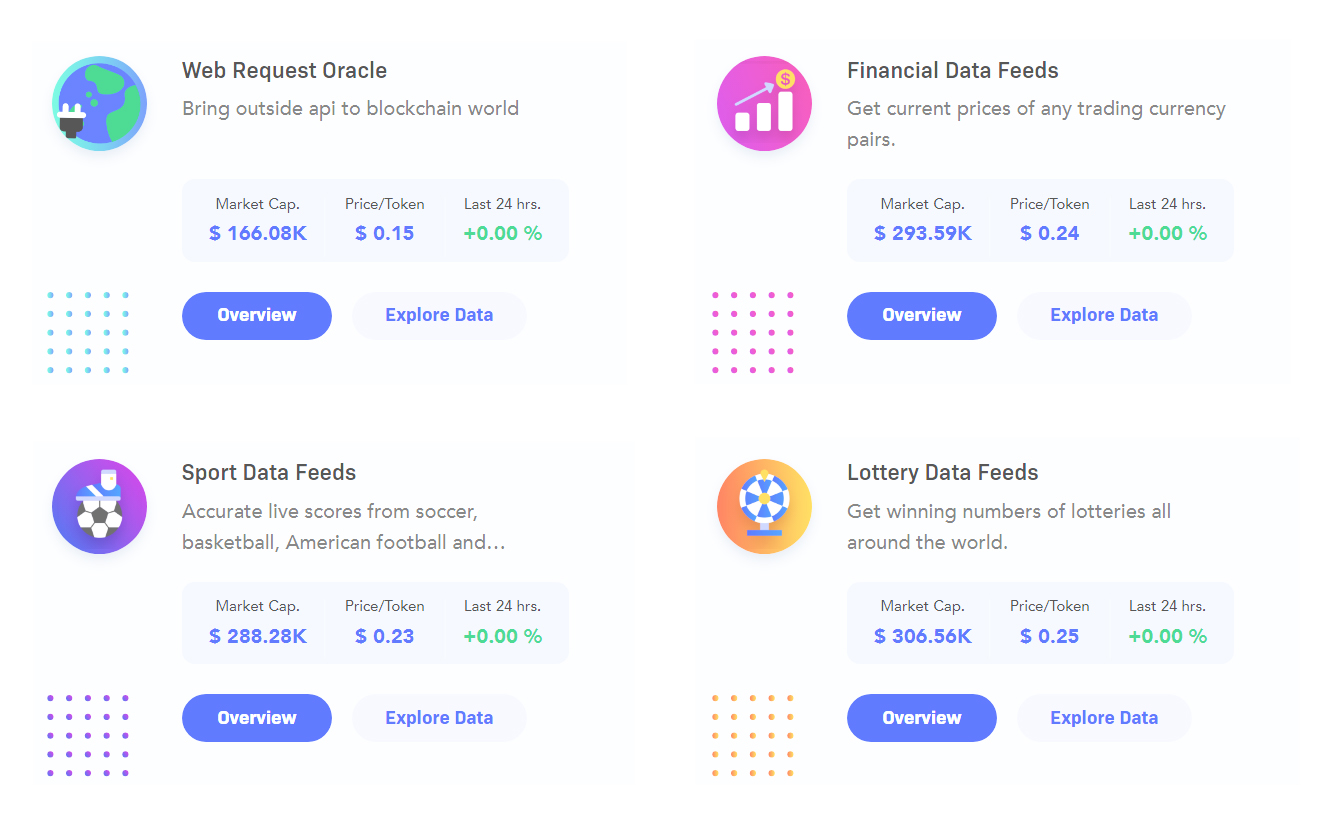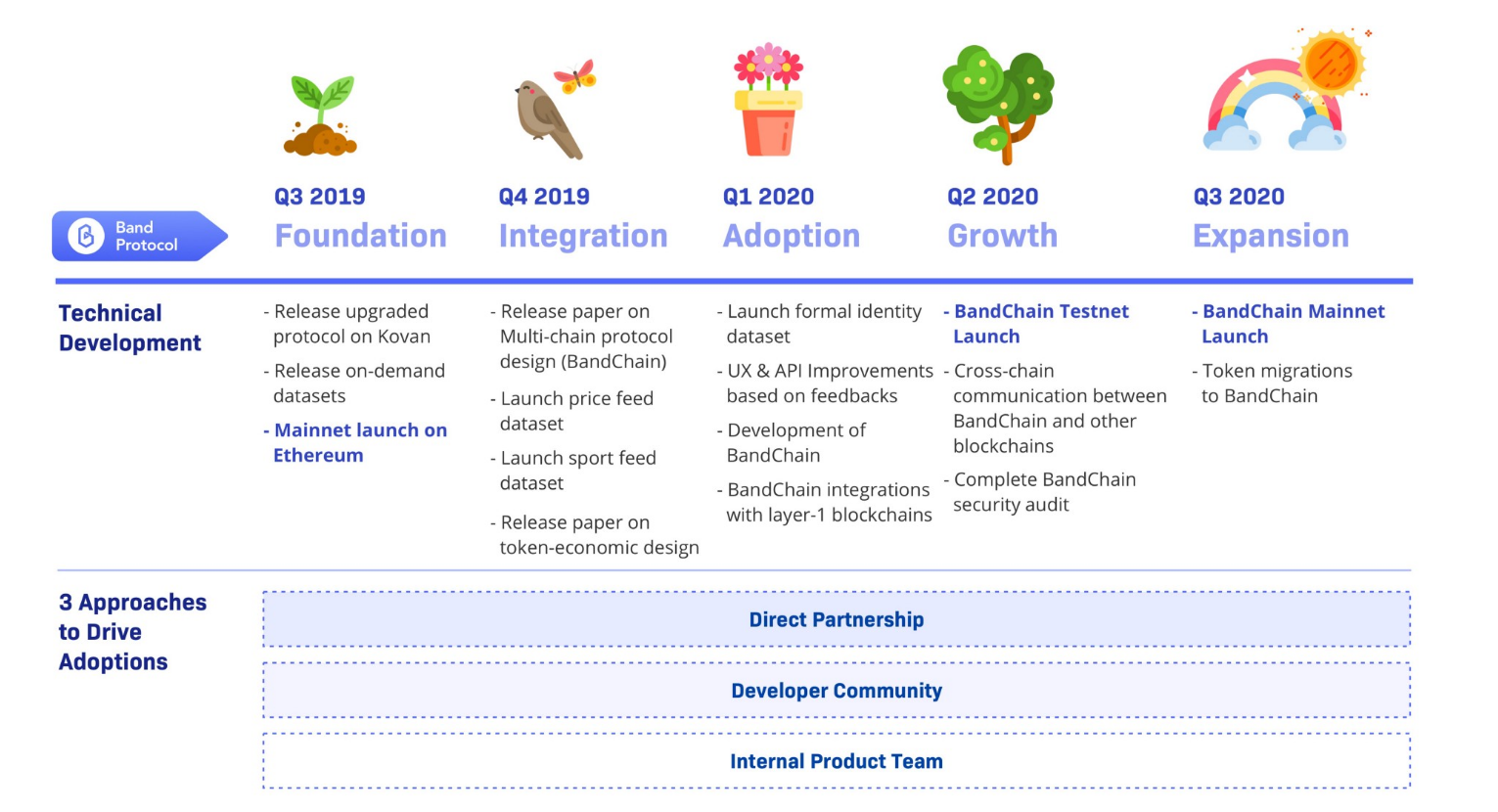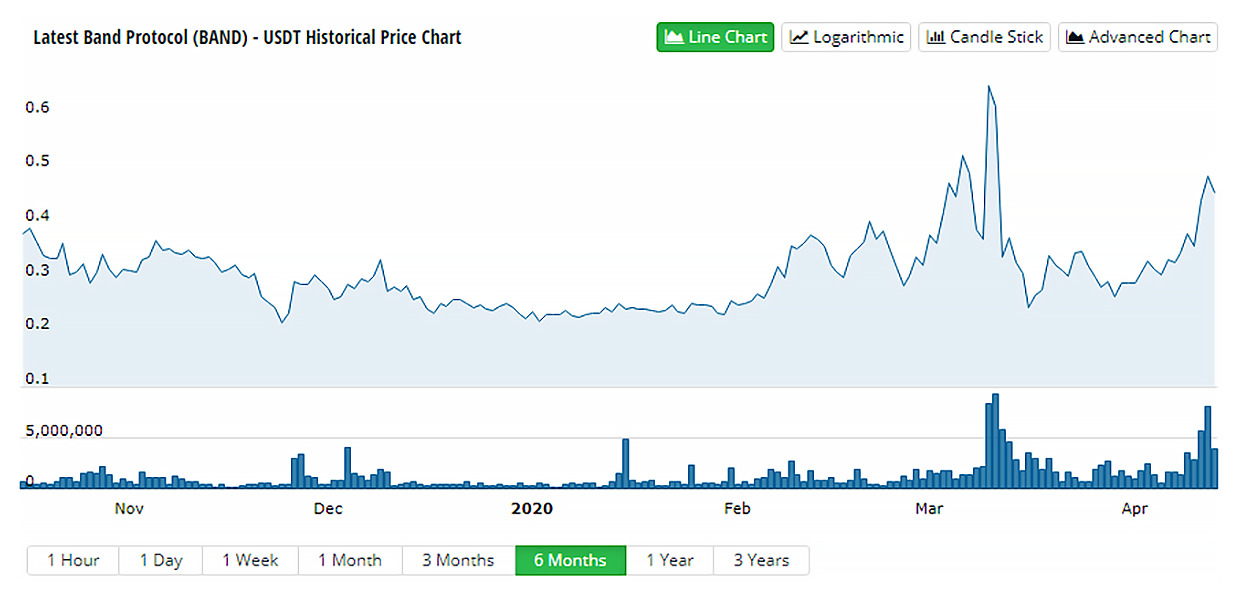BAND PROTOCOL DIGITAL ASSET REPORT
BAND PROTOCOL DIGITAL ASSET REPORT:
BAND Review and Investment Grade
TABLE OF CONTENTS
Investment Grade
Quick Facts
Funding Information
External links
Fundamental Factors
Introduction
In July 2015, Ethereum launched the first smart contracts network, and started a new era of blockchain development. There’s a great deal of excitement in the industry about the potential for smart contracts to transform the way the world works.
However, before smart contracts can become part of our everyday lives, they have to overcome many obstacles. One of the biggest challenges for smart contracts is being able to interact with data from the real world. This is known as the “oracle problem”.
By their nature, smart contracts do not have the ability to determine the authenticity of real-world events on their own, so there is a need for reliable data providers. The first project that has been focusing on solving this issue was Chainlink. It launched its mainnet in the first half of 2019 and is now among the top 15 projects by market capitalization.
As the blockchain space expands, the importance of oracle providers will continue to grow.
While Chainlink is currently dominating the oracle sub-sector in terms of market capitalization, there are several other prominent projects that can successfully compete for a share of this market.
One such project is Band Protocol. The project launched its mainnet in September 2019 and is also aiming to build the bridge between blockchains and the real world.
The project is backed by Sequoia and several other large funds. Band Protocol has been working with Binance (Binance Chain) and is looking to expand into the growing DeFi sector.
Given the overall market potential, and as blockchain enters the mainstream, Band Protocol has a great opportunity to facilitate adoption of its technology, as well as grow its value, user base, and market share.
Market Opportunity
The demand for decentralized oracles is expected to grow as more industries start using smart contracts and adopt blockchain technology. According to Market Research Future, the global smart contract market is expected to reach 300M by the year 2023.
Although Chainlink has been leading the space with its oracle solution, Band Protocol and other players have a good chance to increase their market share.

Global Smart Contracts Market, USD Million | Source: https://www.marketresearchfuture.com/reports/smart-contracts-market-4588
Currently, all projects (including Chainlink) are still working through their development stage, and none have created a problem-free solution. Therefore, dApps and blockchains are trying to choose from among several providers to make the data as reliable as possible.
As an example, after the attack on DeFi lending and trading protocol bZx, the project announced that it will start integrating Chainlink, Band Protocol, and Uniswap v2 as price oracles.
Among the few projects that are trying to solve the oracle problem, there is hardly any competition. This opens up an opportunity for Band Protocol, given the demand for reliable oracle providers on the market.
Underlying Technology
Band Protocol aims to bridge the gap between decentralized applications and real-world data, ensuring accuracy and trustworthiness by providing economic incentives to data providers.
Data providers are responsible for inputting and curating data to the blockchain, making it available to dApp developers.
Band makes data querying simple. According to the project, integrating existing data feeds takes less than 10 lines of code. The project provides a query interface for dApp developers and, in order to start receiving data, developers have to create a simple function call to a static smart contract.
The project uses Token-Curated DataSources (TCD) in order to curate objective data with high volume.
The method is similar to the Delegated Proof of Stake consensus protocol. As described in the whitepaper:
“Token holders collectively elect data providers by staking their tokens in the name of the candidates. Data providers have the authority to provide data to the public with a specified condition, and earn a portion of the fees collected from data queries.”
Only top providers have the right to provide data and to receive fees for their services. Anyone can potentially become a data provider by deploying a Data Source Contract and registering to become a provider that stakes a minimum stake.

Band Protocol Overview | Source: https://bandprotocol.com/whitepaper-3.0.1.pdf
There are several potential attack vectors on such a setup. For example, if more than one-third of data providers collude to provide bad data, the protocol will start serving incorrect data to dApps.
However, the project has tried to make the attack financially irrational since the attacker will also suffer due to the decline in the BAND token price. The protocol implements a “withdraw delay” mechanism to prevent data providers from withdrawing their tokens before ordinary token holders.
In the future, the project is also considering implementing a token slashing mechanism to further discourage dishonest behavior.
Currently, the project supports four data sets:
- A Web request oracle
- Financial data feeds
- Sport data feeds
- Lottery data feeds
The financial data set is arguably the most popular, since the project is making strides by building partnerships in the DeFi space.
This year, the project is also planning to launch its own blockchain, Band Chain. This is needed in order to consistently facilitate data governance and its fee structure. The project will also be working on UX and API improvement based on feedback from developers.
Overall, the project has shown consistent development and has put a lot of effort toward creating an oracle solution for its potential users. However, as with every early-stage product, it still has to go through real-world tests which take into consideration different circumstances. This would make the project, and its technology, even stronger.

Available Datasets for DApps | Source: https://app.kovan.bandprotocol.com/
Ecosystem Development
Last year, Band mainly focused on building its infrastructure. This year, the project is devoting its resources to ecosystem expansion. Band has already partnered with over 13 projects, and the number of partnerships and real world integrations is only going to increase.
Currently, the largest Band partner is the top world cryptocurrency exchange exchange Binance. Band has not only conducted an IEO on Binance launchpad, but is also looking to integrate with Binance Chain. In fact, both projects are exploring Band cross-chain compatibility to enable cross-chain token exchange between Ethereum and Binance Chain.
Band Protocol is also actively working to expand its services to the DeFi sector.
Recently, Band has partnered with the already mentioned bZx project. bZk is a decentralized lending protocol that was hacked twice in February 2020. After the hack, the project decided to migrate away from the DEX price feed and start using Band Protocol and Chainlink oracles for better security of its users.
Band has also partnered with Kava, a Ripple & Binance-backed project (and Maker Dao competitor), that is building a cross-chain DeFi platform to offer collateralized loans. Band has already integrated its price data into Kava’s price feed module. In fact, Kava “will be piloting Band Protocol’s new ‘batched data’ to prevent users from being compromised by congested networks/invalid oracle data.” This is especially relevant, given the recent congestions on the Ethereum network due to the sell-off on the market.
Besides DeFi projects, Band has actively partnered with first layer protocols. The project has been working with Wanchain and Elrond to provide decentralized oracles to their ecosystems. In March of this year, the project also partnered with Fantom. Band is planning to integrate into Fantom’s Opera Mainnet and act as a supporting oracle for various dApps. Band is already working on integrating with Fantom.finance — a full feature DeFi platform outside of Ethereum.
During this year, the project is planning to launch its own blockchain, Band Chain, and has been actively partnering with the largest staking validators that will support the launch and secure the chain in the future. On its list of partners are:
- Forbole – one of the genesis validators on Cosmos Hub which has consistently ranked in the top 20% in terms of voting power
- Infstones – a Silicon Valley-based company providing cloud management services and security solutions for high-net-worth individuals
- B-Harvest – a Top Korean validator, one of the largest Cosmos validators that also supports Polkadot and Terra
- StakeWith.Us – the first industry-established validator to be backed by a government fund
- Chorus One – a validator with over $12M in assets staked across Cosmos, Kava, and Terra
- Cosmostation – an industry-leading validator with over $15M in assets staked and operating in the Cosmos ecosystem
The support of the validator community should help the project smoothly launch its own blockchain and make and create even more interest to its oracle solution from potential clients.
The project has also been supported by large institutional investors. Almost a year ago it raised a $3M seed round led by Sequoia India. In fact, Band was Sequoia’s first investment in Southeast Asia. The other seed investors were Dunamu & Partners (the owner of Upbit exchange) and SeaX Ventures (an early stage VC fund). Institutional investors not only bring capital to the project but also help with connections in the industry and real world integrations.
Over the last year, Band has not only built a working solution, but has created a healthy ecosystem. With more partnerships and integrations upcoming in the future, Band has a strong chance to increase the adoption of its platform.
Token Economics
Band Protocol is built around two token types: BAND token and dataset token. Currently, all of the tokens are ERC-20, however, as the project has launched its own chain, the tokens will be migrated to a new blockchain.
BAND token provides three main utilities:
- BAND is used as collateral to issue dataset tokens. To mint dataset tokens, users have to send BAND to the data governance group’s bonding curve smart contract
- Governance – the token is used for proposing and voting on future protocol improvements
- Band will use a Staking token for Band Chain as it is launched on the mainnet
Dataset tokens are used for governing and curating data through Token-Incentivized Data Curation methods. Basically, these tokens represent a ownership stake in a particular dataset and are used by:
- Data providers, which are required to stake a certain amount of dataset tokens that have the ability to provide the data
- Token holders that are willing to participate in the curation of data providers and the governance of a dataset.
As it was already mentioned, users are using a bonding curve smart contract in order to mint Band tokens.
According to project’s whitepaper, this architecture has several benefits:
Bonding curve ensures that (1) the dataset token’s price always goes up as the supply increases, and (2) token holders always have an option to ”exit” by selling their dataset tokens to receive proportional BAND back. This ensures that the dataset tokens always remain liquid and useful in any situation, protecting the incentive mechanisms crucial for successful operation.
While dataset tokens are not traded on regular exchanges, BAND tokens are actively traded. The overall total supply is 100,000,000 BAND. However, only around 31.67% of the tokens are unlocked. While the next unlock is planned for May (another 5%). According to the team, the seed and private investors are long term holders and do not have plans to sell the tokens on the market.
Moreover, as the project launches Band Chain, utility of the BAND token will only grow, since holders will be incentivized to stake it to secure the chain. This could help mitigate potential sell pressure as more tokens will be unlocked this year.
All things considered, Band has created a sound token economic structure that has been supporting the overall utility of the token. This should be beneficial for the project as adoption of the protocols grows.
Team
Soravis Srinawakoon, CEO and Co-founder. Soravis holds a bachelor’s degree in computer science and a master’s degree in management science and engineering from Stanford University. Prior to founding Band Protocol, he worked as a management consultant for Boston Consulting Group.
Sorawit Suriyakarn, CTO and Co-founder. Sorawit holds a bachelor’s degree in computer science and engineering and a master’s degree in electrical engineering and computer science from MIT. Prior to co-founding Band Protocol, he worked as a software engineer in Dropbox and Quora. He has also worked as a core developer at the Hudson River Trading.
Paul Nattapatsiri, CPO. Paul holds a bachelor’s degree in computer science from Rensselaer Polytechnic Institute, NY. Prior to joining band protocol, he worked as a web developer for Turfmapp, and had an internship as a software engineer at TripAdvisor.
The project has a very professional executive team, with the top team members having graduated from some of the best universities in the United States. Although some of the team members do not have much work experience, this has not been an issue for the project, so far.
The project consists of around 12 people. Most of the team members are developers, however, the project also has a few business developers that are dedicated to building partnerships in the DeFi sector, as well as across the Asian region.
Given the project’s current achievements, the team has shown that it is able to build the product and sell it to the market. In fact, this is a fundamental foundation that characterizes successful teams.
Roadmap
The main goal for the next two quarters will be the launch of the Band Chain. The project is planning to launch the testnet in Q2 2020, and the mainnet in Q3 2020.
Besides development, the project will be working on building more integrations with DeFi dApps, Layer 1 blockchains, and other projects that will support the development of its ecosystem.
Given the fact that the team has been moving quite fast with developments for the past year, it is unlikely that we will see any delays on the current roadmap.

Roadmap & Go-to-Market | Source: https://medium.com/bandprotocol/band-protocols-vision-and-roadmap-f02eed95a8cf
Token Performance
Over the last 6 months, BAND’s price has shown signs of bottoming out. The token is currently down around 43% from its ATH.
The recent meltdown on the crypto market did not significantly affect the overall valuation of the project, and it looks like BAND’s price could be heading back up again.

BAND price chart | Source: https://www.cryptocompare.com/coins/band/overview/USDT
Conclusion
Oracles are the key infrastructure element that will allow blockchain to enter our everyday lives. It is more than likely that the market will be using many oracle providers. Projects that are working on the problem today have a good chance to gain a competitive advantage.
Band Protocol has been building a strong product and strong ecosystem of partners. This should help the project gain market dominance and grow the adoption of its technology.
The demand for oracles is only likely to grow, and Band has a good chance to capture a large portion of this demand with its solution. Therefore, Band Protocol is graded with a B-.
The author(s) of this report is/are invested in the following coins: ETH.
How to purchase BAND
Choose your preferred exchange. BAND can be purchased from several cryptocurrency exchanges, the full list of available exchanges can be seen here.
Step 1. Head over to your preferred exchange.
For US residents the best method is to buy from Bilaxy and then move coins off the exchange into a wallet that you control.
Step 2. Create an account on the exchange of your choice if you don’t already have one.
Step 3. Top-up your exchange balance with some of your USDT
On Bilaxy, BAND can be purchased with Tether so make sure to first send over some USDT to your exchange wallet. (Don’t forget to double-check that the address you are sending your coins to is correct!)
*Optional: If you don’t own USDT the easiest way to buy them is through Binance US.
Step 4. Choose your trading pair
Head over to the exchange and choose USDT to purchase BAND with.
Step 5. Purchase BAND with limit order.
You can only use a Limit Order to purchase BAND
Input the amount of BAND you would like to purchase and the price at which the order should be filled at and press Buy. (It might take some time for the whole order to be filled if you are purchasing a large amount).
Step 6. Store your BAND on one of the supported wallets for increased security.
To store BAND, you can use Trezor, or Ledger for improved security.








